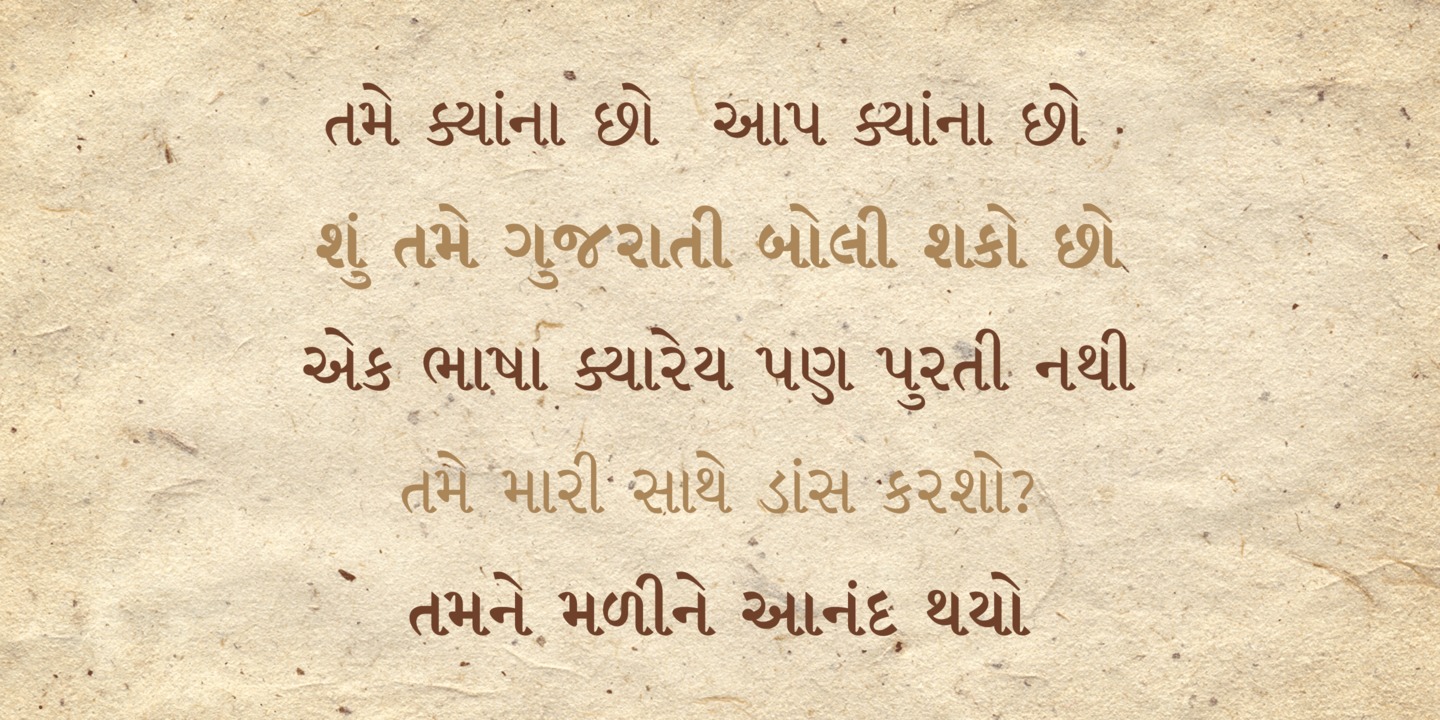

And the I-matra is positioned immediately in front of the previous base (or half-form) preceding it, which in this case is the La. Option 2= By not listing Da in the 'half' feature lookup, the shaping engine will read it as the first main consonant on which to position the reph. Note:** if the second consonant was a Ma, the Da + Ma would be substituted with the DaMa ligature.

Thus, the shaping engine will treat it as a half and the reph is positioned on the first main consonant and the I-matra will be positioned immediately in front of the 'half-form' D(a).** Option 1= While the 'Da' does not have a true half form in Gujarati, it can be listed in the 'half' feature lookup substituting the 'halant form' of Da. In the example below (Ra + halant + Da+ halant + La + I-matra), Ra + halant will form the reph, but how the Da is classified (listed in the half feature or not) will determine the position of the reph as well as the location of the pre-pended matra. For example, the location where the reph and pre-pended matra are re-ordered within a syllable cluster is affected by the presence of a half form. The new Indic shaping engine allows for variations in typographic conventions, giving a font developer control over shaping by the choice of designation of glyphs to certain OpenType features. In addition, registered features of the Gujarati script are defined and illustrated with examples. While it does not contain instructions for creating Gujarati fonts, it will help font developers understand how the Indic shaping engine processes Indic text. It contains information about terminology, font features and behavior of the Indic shaping engine in regards to the Gujarati script. This document targets developers implementing Indic shaping behavior compatible with Microsoft OpenType specification for Indic scripts. Gujarati is closely related to Devanagari and is used to write the Gujarati language of north India. This document presents information that will help font developers create or support OpenType fonts for the Gujarati script covered by the Unicode Standard.

While Indic fonts made according to the earlier recommendations will still function properly in the new versions of Uniscribe, font developers may choose to update their fonts, particularly if they wish to avoid certain limitations of the earlier implementation. Please note:: This document reflects the changes made in 2005 recommendations for Indic-script OpenType font and shaping-engine implementations.


 0 kommentar(er)
0 kommentar(er)
